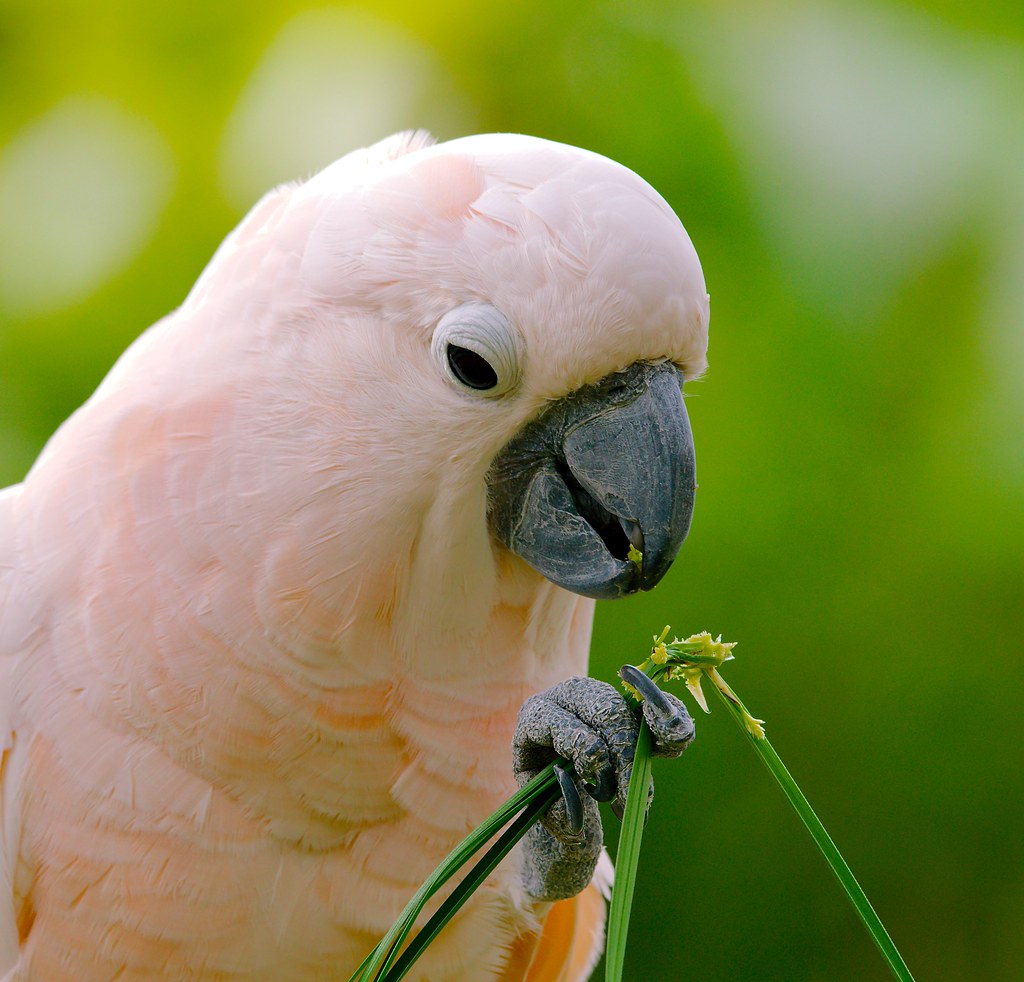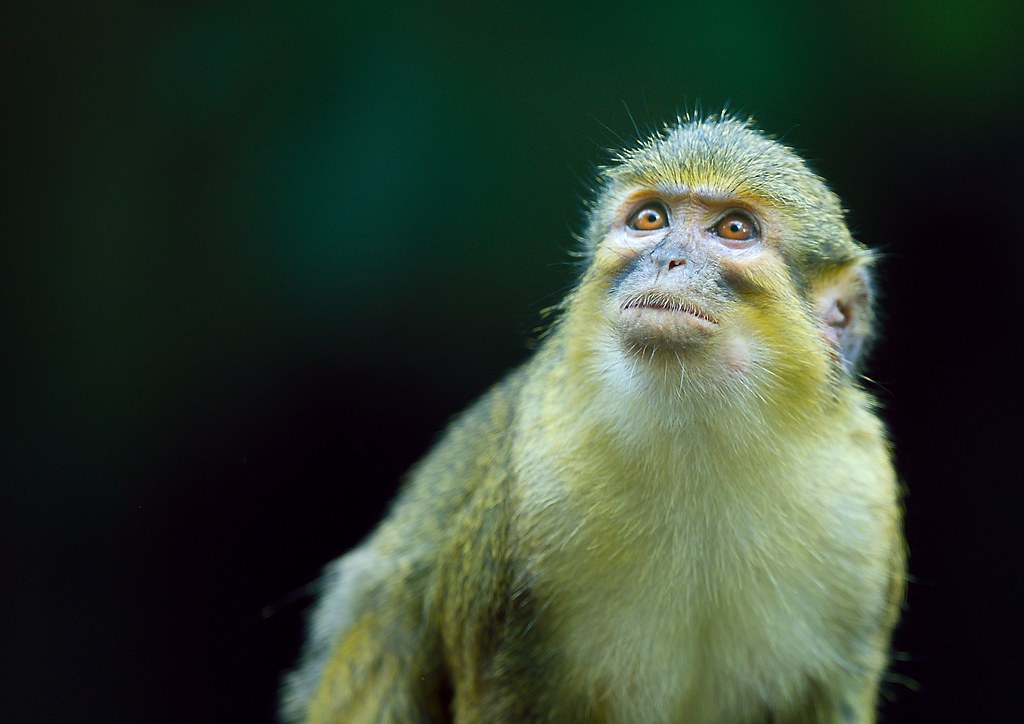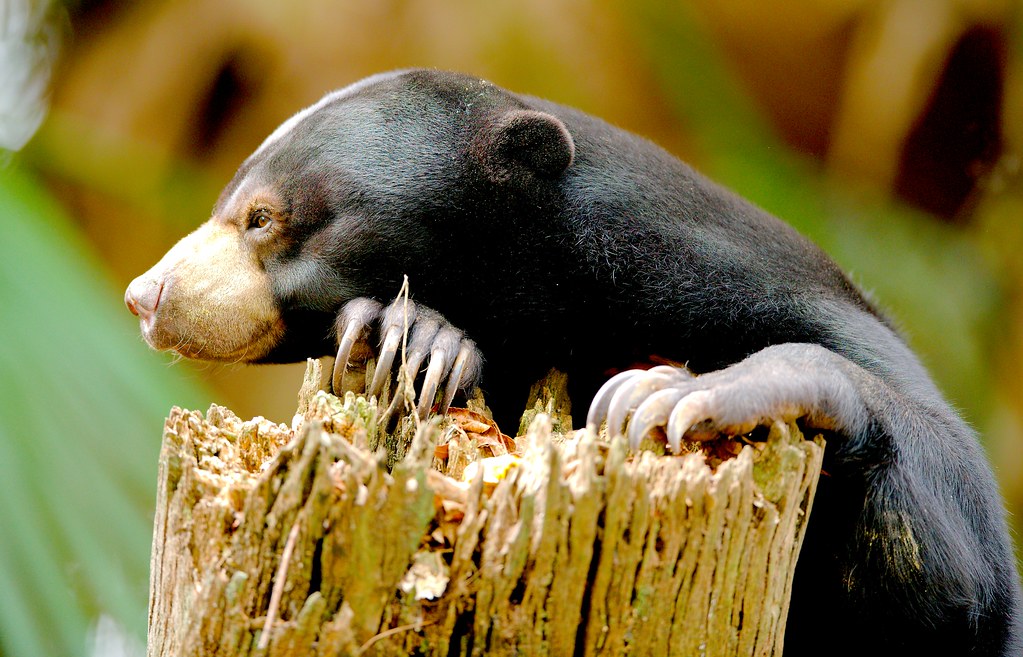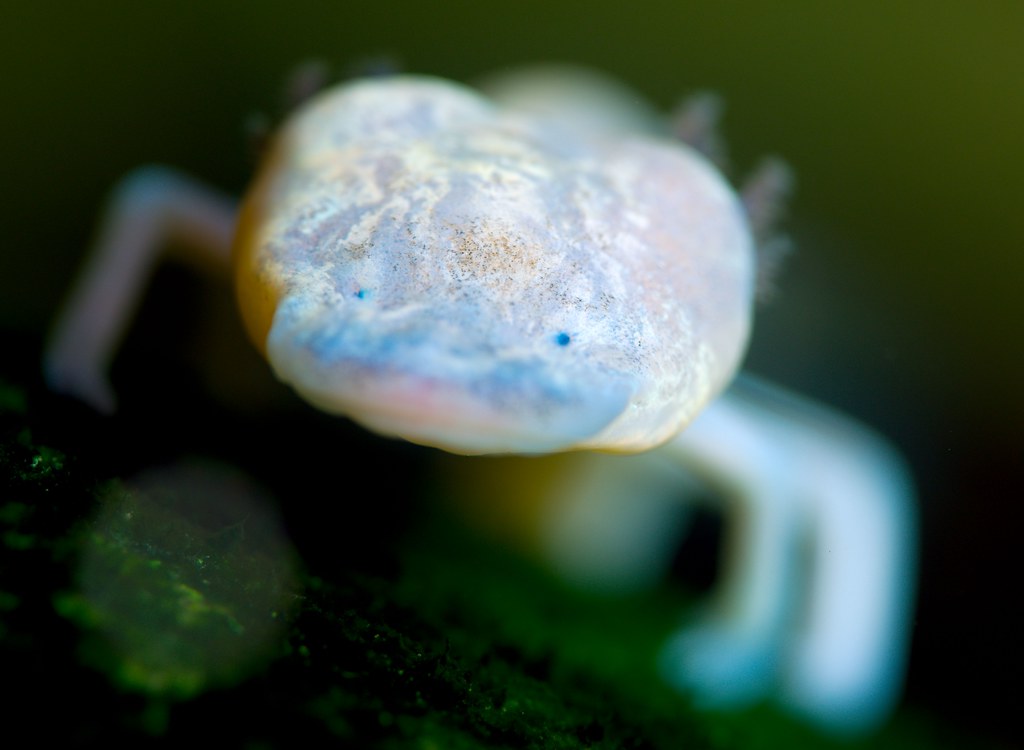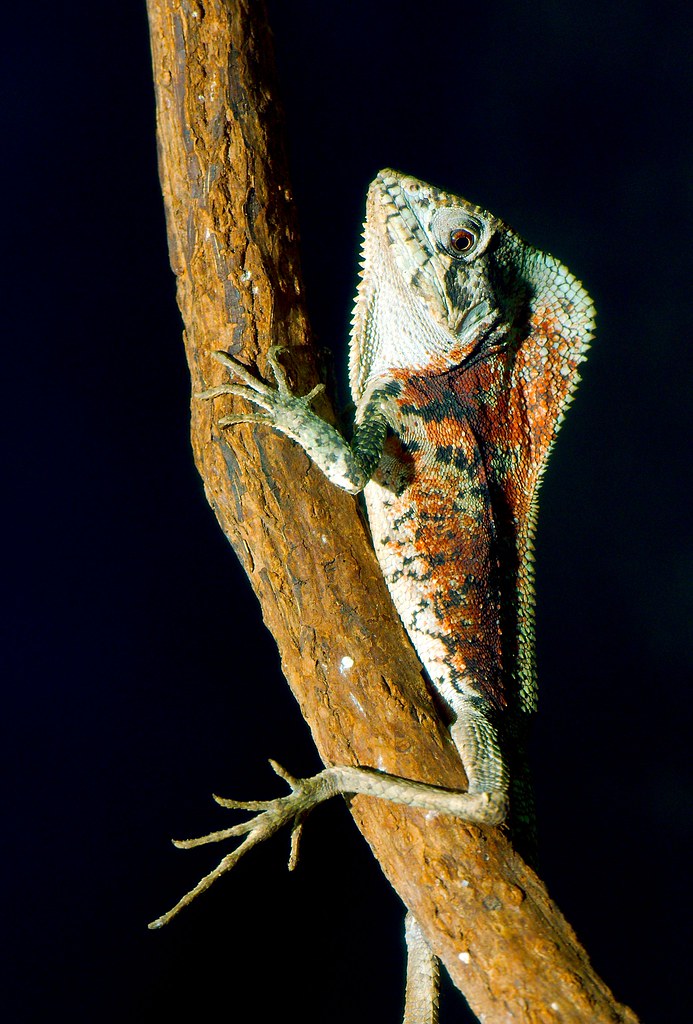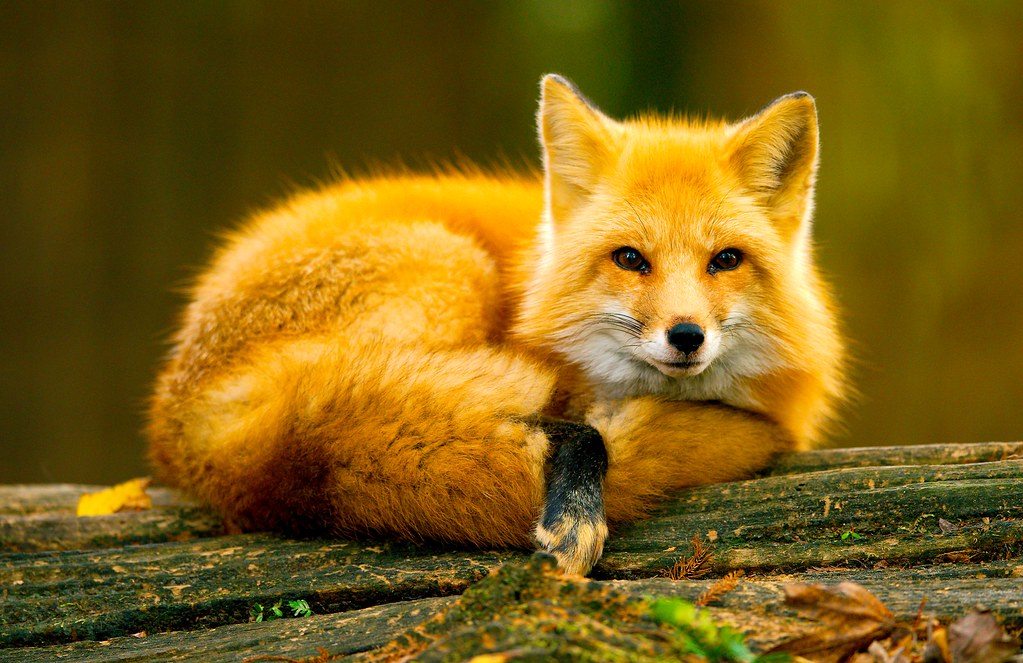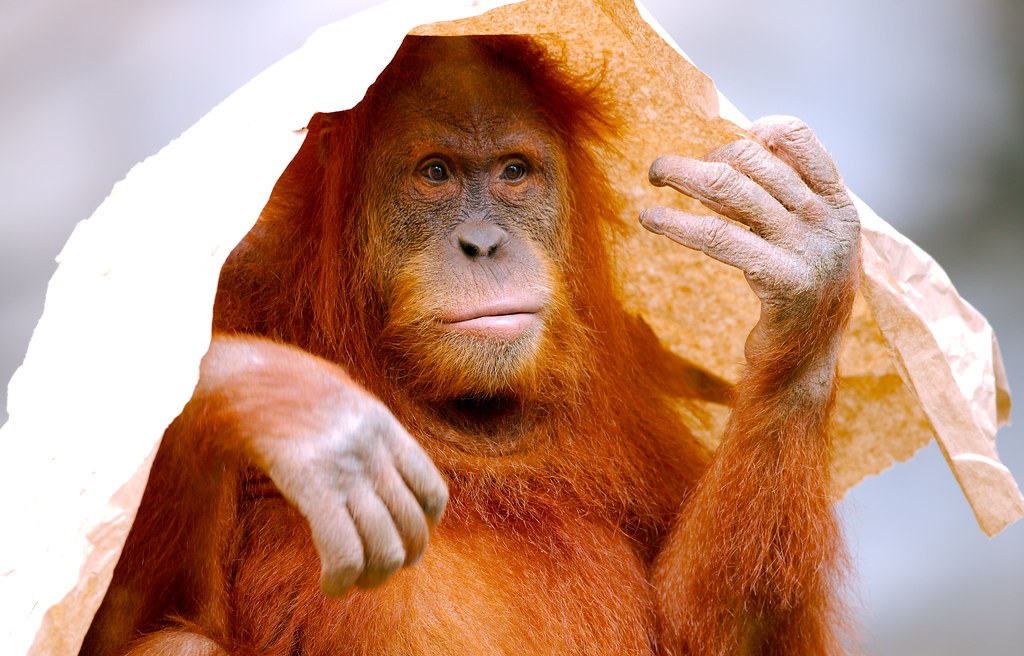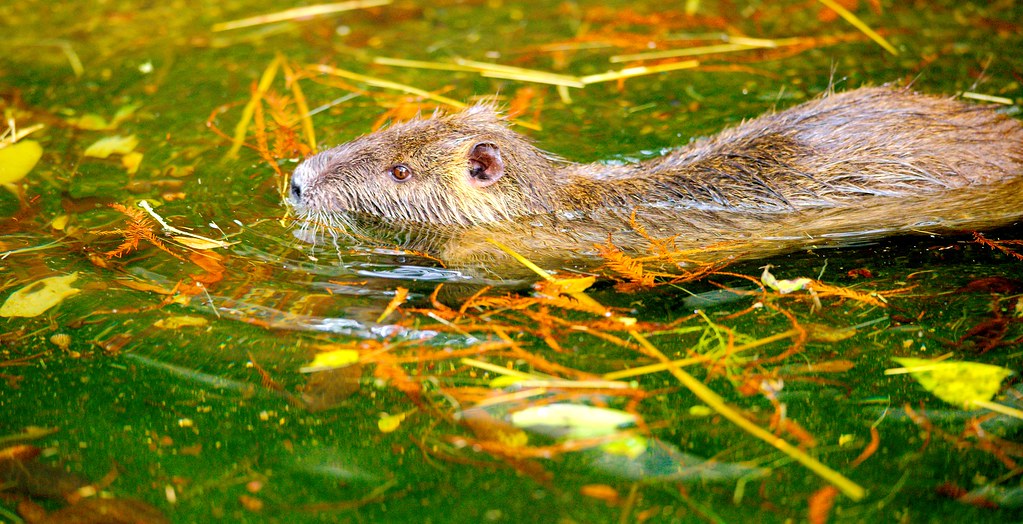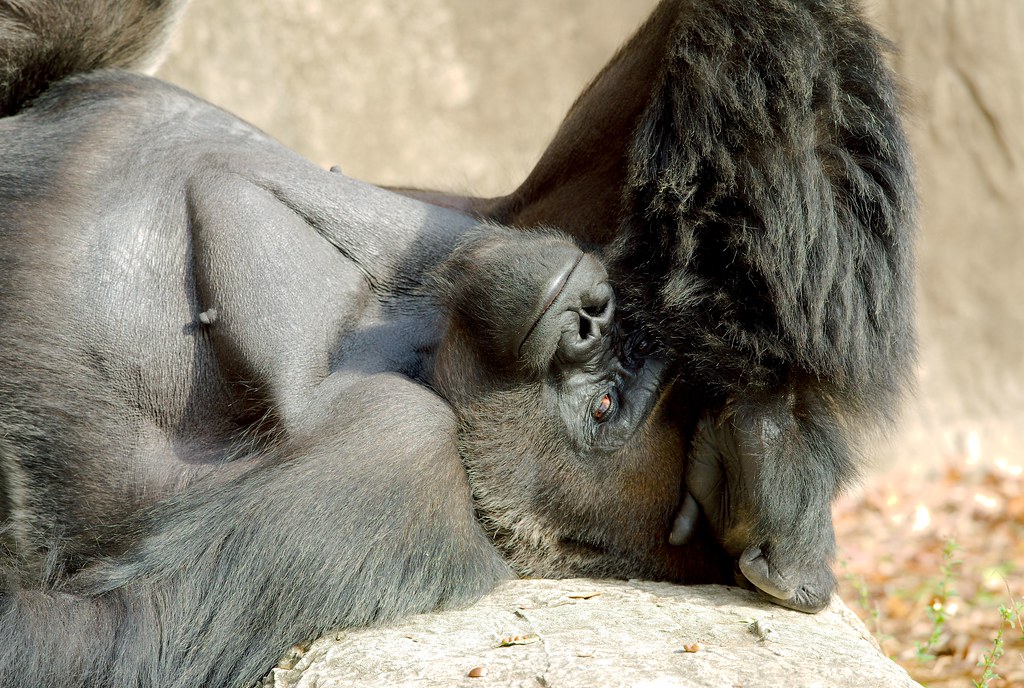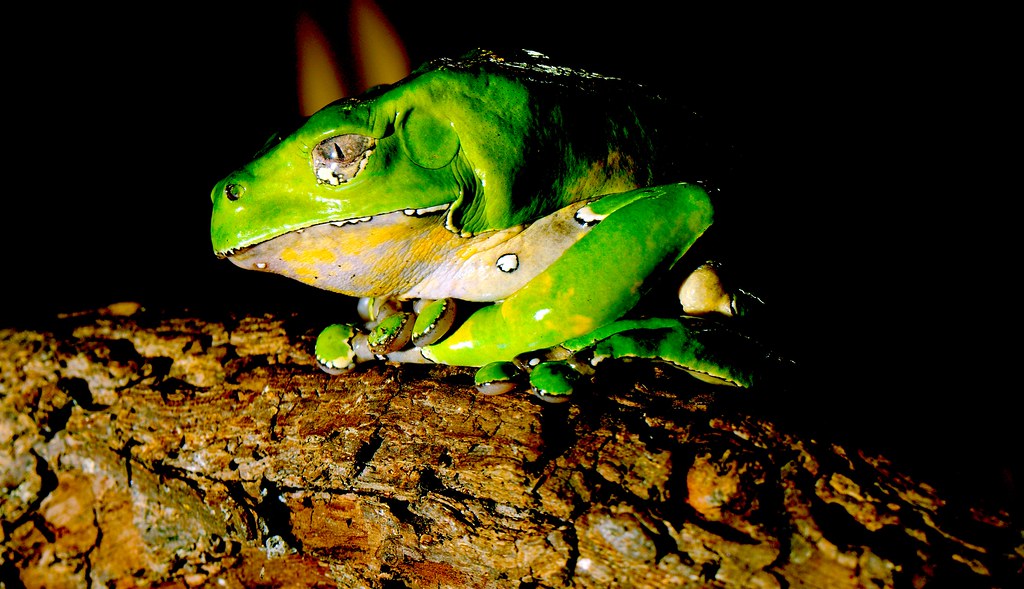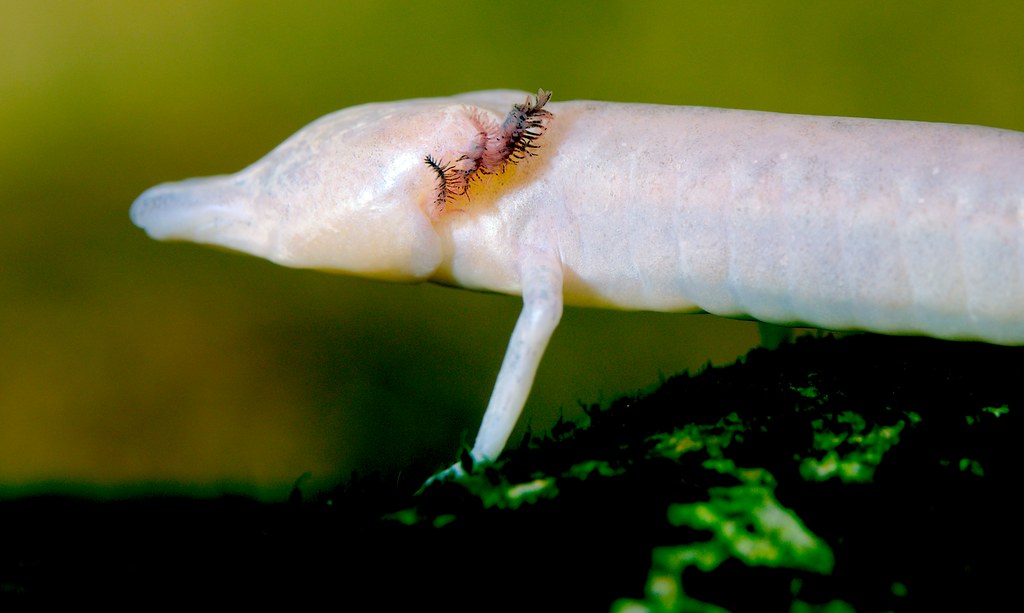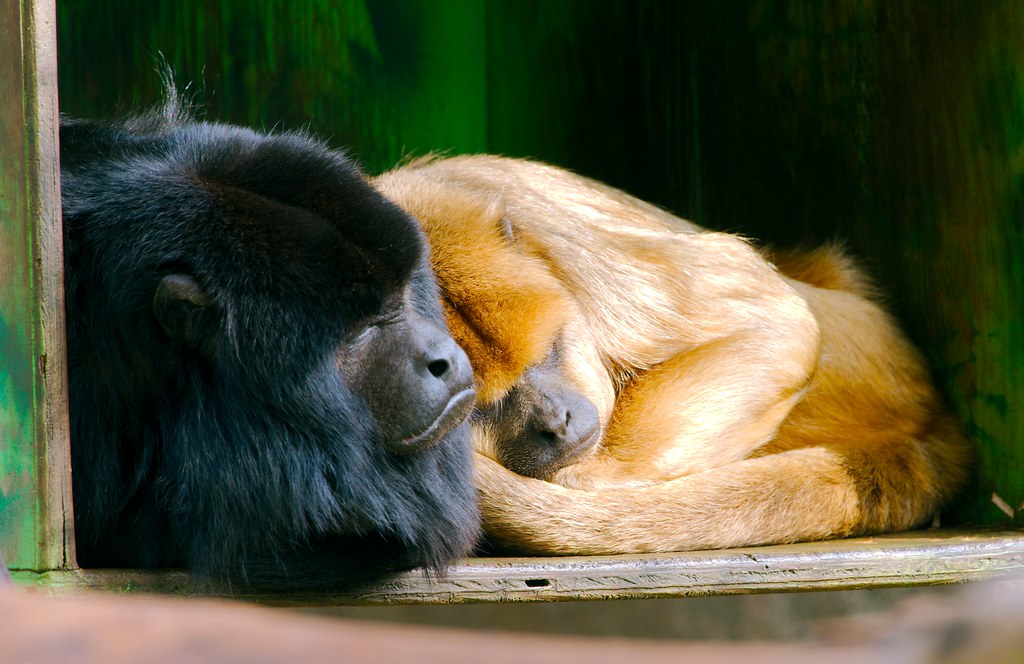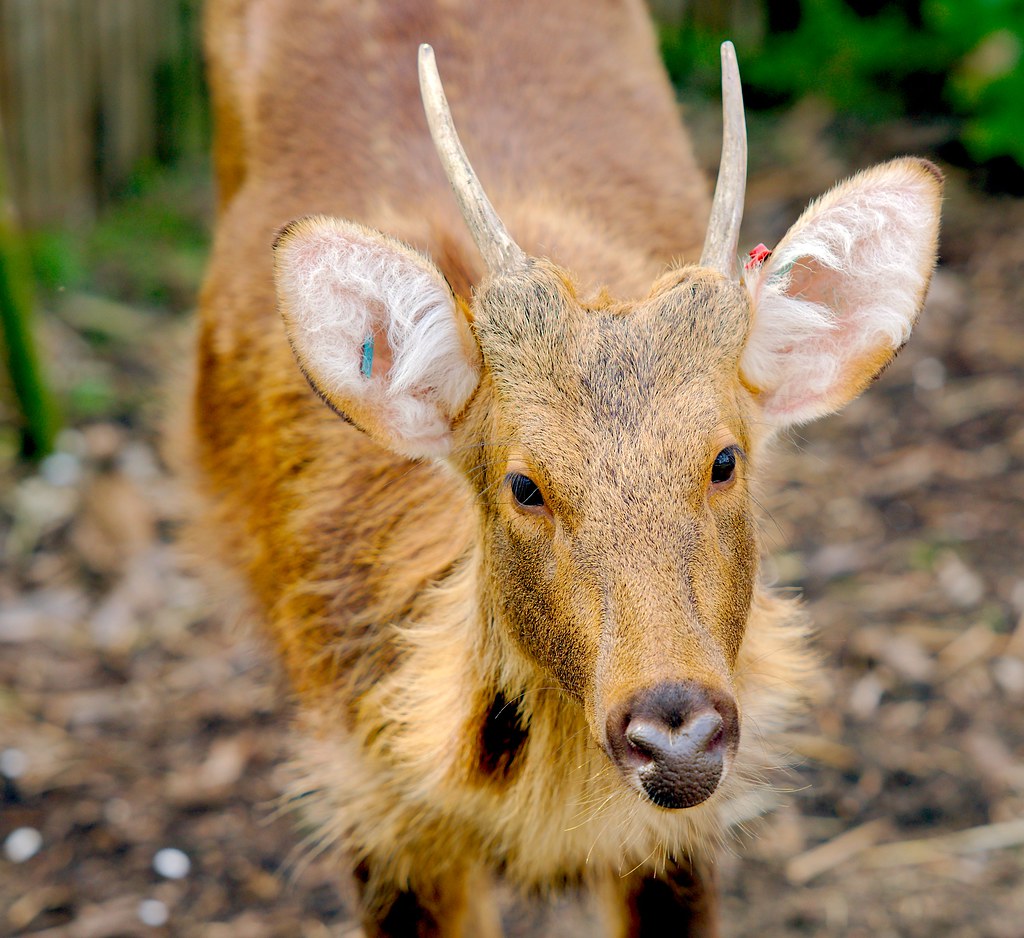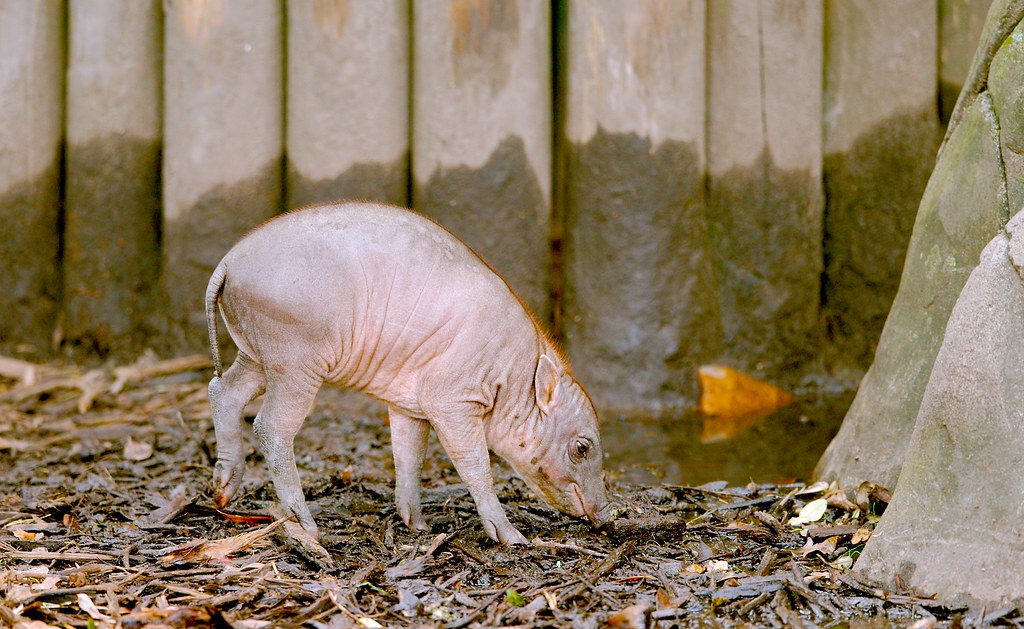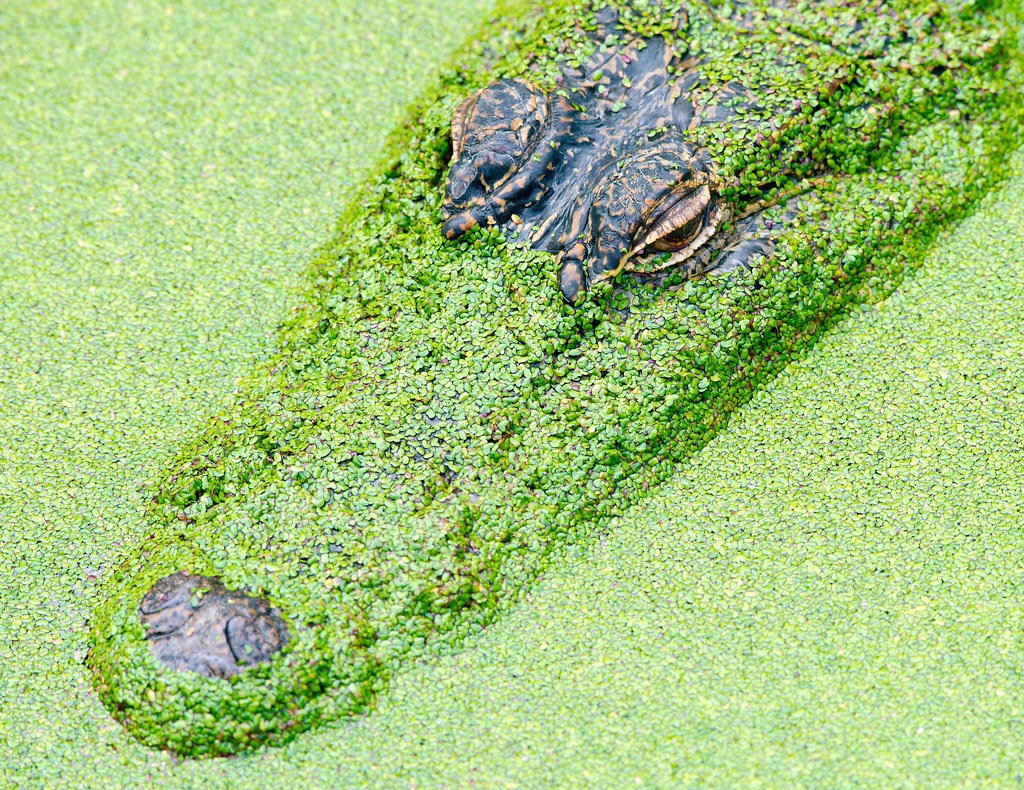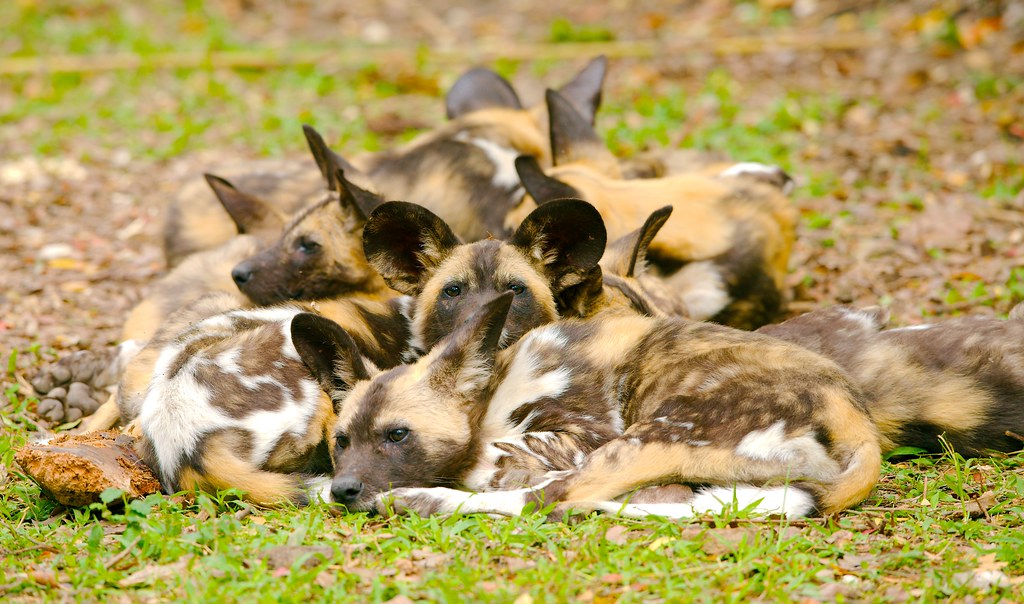“They put high fructose corn syrup in everything these days!”
Tag Archives: Audubon Zoos – New Orleans
Talapoin Monkey
The zoo called this a “talapoin”, but there are two species of talapoins, the Angolan and the Gabon. Not knowing what made them different, I went a-searchin and came across the following claim:
“Unlike the related Angolan talapoin, the Gabon talapoin has flesh-coloured (not blackish) ears and facial skin.” (from The Kingdon Guide to African Mammals, by way of Wikipedia)
Now maybe it’s just me, but it seems that the ears and facial skin or any monkey, whatever they look, would be flesh-coloured.
Crayola’s got a lot to answer for.
Sun Bear
Texas Blind Salamander
Sailfin Dragon
Red Fox
Orangutan
Nutria
This is the first actual nutria I’ve seen, which means I get to tell the story about confusing South American mammals.
It is not uncommon for native peoples to use different classification systems than is used by the Western-educated post-colonial developed countries. This shouldn’t come as a surprise because the way they interact with these animals is very different. Let’s start with the naming.
In English, German, Chinese (various variants), and Russian, this animal is called the “nutria”. However, in Spanish, the word “nutria” refers to what we call the beaver. Since this is confusing, in Spanish, this animal is called the “coypu”, based on the Mapuche language used in Chile and Argentina. In French, it’s a “ragondin”. But, just to make things confusing, in Dutch, it’s a beverrat. Secondary names in German, Italy, and Swedish include “biberratte” (beaver rat), sumpfbiber (swamp beaver), castorino (little beaver), or sumpbäver (marsh/swamp beaver).
OK, so far we know that it’s beaver-like but that it’s not actually a beaver. Now we get to talk about religion.
As some of you know, there is a rather major religion that is now popular in Central and South America … but the path to its popularity wasn’t exactly straightforward. One aspect of that religion when it was being spread throughout the new world was that people were expected to fast on Friday and/or Lent (various reasons for this exist, but I couldn’t find a definitive answer as to why). In practice, “fasting” didn’t mean then what it means today. The point was to avoid eating warm-blooded mammals. In practice, this meant eating fish.
Now, fish just isn’t equally available to everyone world-wide, but rituals matter. At this point, there are numerous stories about what happened. There are stories about native villages refusing conversion because the fish in their rivers weren’t safe to eat. There are stories about missionaries unable to meet the Lenten requirement, and one involving the Bishop of Quebec. All of these stories involve petitions being sent to the Vatican asking for permission to eat things other than fish.
The obvious solution, of course, was for the church to declare that these animals were, in fact, fish. The two decently documented stories I could find specifically allow beavers and capybara to be fish. However, because of the linguistic drift, according to the people I talked to Costa Rica, Nicaragua, and Peru (not a huge sample, admittedly), the pope has declared “nutria” to be fish … with whatever definition of nutria you prefer, be they beaver, capybara, coypu, otter, or any other rodent found in the water. This is why they’re okay to eat on Fridays and during Lent, but only if you’re native to Central or South America.
I was told that white people don’t eat them whatever day it happens to be.
Gorilla
Giant Leaf Frog
Texas Blind Salamander
The Texas blind salamander is native to Texas, but that’s not all.
More specifically, it is native to the Edwards aquifer in Texas.
More specifically, it is native to the part of the Edwards aquifer in Hays County, Texas.
More specifically, it is native to the part of the Edwards aquifer in the city of San Marcos in Hays County, Texas.
More specifically, it is native to the part of the San Marcos Pool of the Edwards aquifer in the city of San Marcos in Hays County, Texas.
And that’s the problem with certain rare species. The conditions they require for survival are so specific to their needs (having evolved to be a precise fit), that even small changes can push them straight to extinction. Due to how Mexico’s use of water has changed, this is happening with the axolotl (also living in a very specific pool), but it also happens to island species. Sometimes the change is due to something else establishing itself on the island – rats, snakes, pigs, rabbits, frogs/toads, humans, etc. Increasingly, though, it is due to climate change.
We like to think that as the climate changes, animals will just move, but that’s not an option for everyone. Animals can become trapped in “survival pockets”, like actual islands, the tops of mountains, areas of land surrounded by mountains, peninsulas, etc. As the planet warms, survival zones shrink and species are condensed into these smaller pockets, competing for fewer and fewer resources.
Eventually, there simply won’t be enough resources and the species will adapt or die out. There’s nothing wrong this, as this is the way the world has always been. The different is that, today, change is coming faster than ever before … and adaptation takes time. This is why the sixth extinction is such a big deal. As the planet changes, we will be seeing increasing losses of biodiversity in all sorts of places. Sure, we can survive some of them, but the web of interactions between species is amazingly complex and we have no way to know which losses will hurt our own species.
I am not so naive as to think that everyone could share the interest I have in rare species. However, I am constantly surprised at how few people prioritize long term survival of our own species over short term financial gain. Maybe the species that supplants our own will be somewhat wiser.
